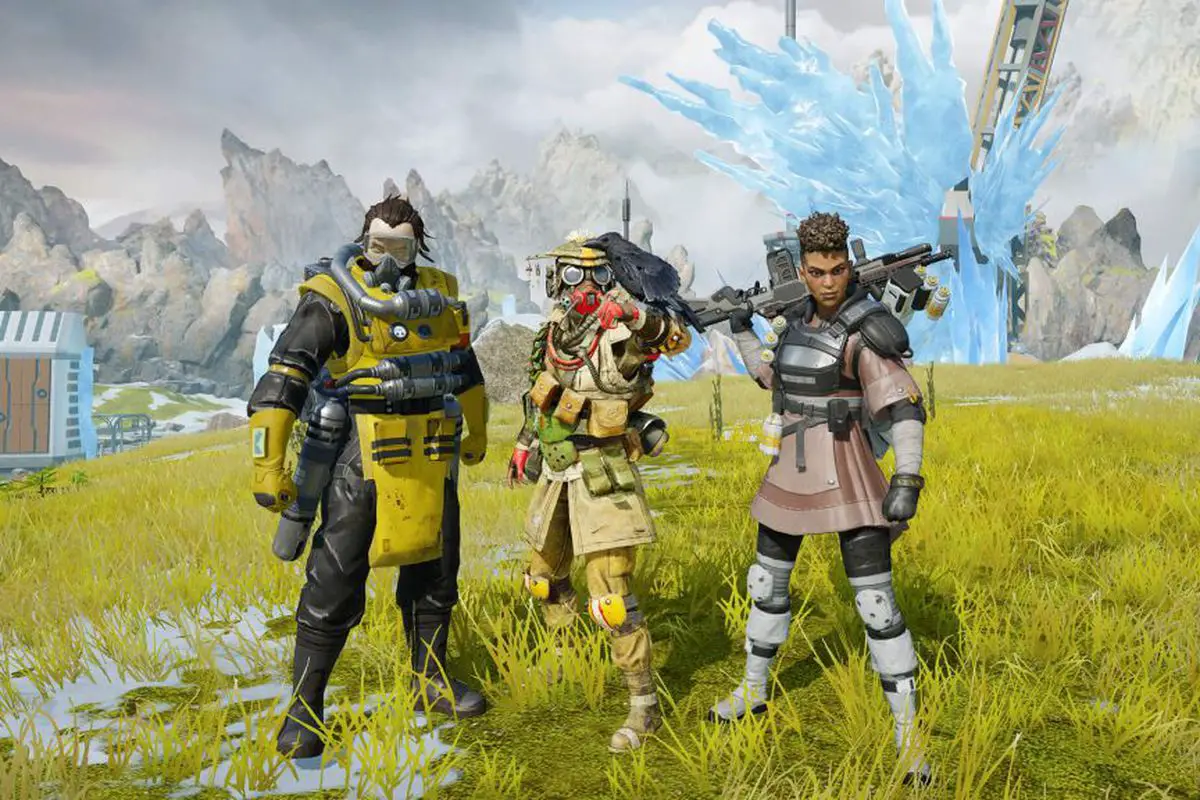Ever since its release on Feb. 4, 2019, Apex Legends has lured gamers across the world into its patented arena. While its release followed many other battle royale-style games, most notably PUBG and Fortnite, Apex offered players a different approach to the genre. With a heavy emphasis on team play through the inclusion of many different MOBA-inspired characters (coined “legends” for obvious reasons) the game expertly mixes fast pacing and strategy. And while Apex has successfully maintained the team-focused style of play for its entire three years of existence, the high-octane rhythm of the game has since been reduced to a more passive playing style.
For those unfamiliar with battle royale-style games, they function just like the Hunger Games in that there is only one survivor at the end. There are only really three main differences between the structures of Apex Legends and the “Hunger Games.” First, the main game mode in Apex features teams of three so at least you’re not alone like you would be in the “Hunger Games.” Second, surviving as the last squad alive is not the only goal of the game, as killing other players awards you points as well. So naturally, when a bunch of teenagers are given the opportunity to progress by fighting other teams, the gameplay becomes very action-packed and aggressive. And finally, if a team member is killed in battle, then the other teammates can grab their banner and revive them, bringing them back into the action. As far as I’m aware, that sort of thing didn’t happen in the “Hunger Games.”
Just like in every other game, Apex Legends offers several different arenas for players to play in. If you want a more casual gaming experience, you can hop into a public match that is open to everyone and filtered by a loose skill tracking system. If you want to boost your ego by attaining high status in a fabricated video game progression system, you can enter the more competitive ranked arenas and prove your worth by sitting at a computer all day. The game even offers pro-level matches where the top players from around the world compete for money, with the most recent tournament offering a total prize pool of $2 million. But unlike many other video games on the market, each level of play is clearly defined in its own league, allowing for an enjoyable fast-paced experience for everyone.
At least that was the case for the majority of the game’s lifespan. Unfortunately, with the release of its most recent season update on May 10, the structure of the acclaimed Battle Royale has changed for the worse. The clearly defined barriers that set apart the ranked gameplay from the pro-level have disappeared almost entirely due to changes in its ranking system. In previous seasons, the ranked system was fairly rewarding to those who decided to focus on the killing aspect of the game as opposed to the more strategic focus of living as long as possible. Kill points were worth a decent amount when compared to placement points, so the ranked matches maintained the action while simultaneously incorporating more strategy than public matches.
But in the new system, players who want to rank up solely by racking up kills are left out to dry. Kill points are far less rewarding now as the entry cost of games has increased drastically and the reward for getting kills is tied directly to what place the team ends the game in. So, for instance, if one team of aggressive teenagers gets five kills but places in the bottom half of the lobby, they would then rank much lower than a team who has only three kills but who lives long enough to reach higher placement.
Now theoretically this sounds like a good change because it makes the game more strategic. Ideally, there will be more teams surviving for a longer duration, and the testosterone-filled teenagers might become less annoying. But after two months of games in the new system, the system has some glaring problems.
The first problem is that the ranked experience is just too slow-paced. Prior to the update, ranked games offered the perfect balance of aggression and strategy for most players to enjoy themselves. A good game saw plenty of fights for those with anger issues and plenty of strategic plays for those without them. But under the new system, the only way to climb ranks is by sitting in a good position in what the final zone will likely be and avoiding fights when possible.
Basically, this leaves a grace period of sorts for the first half of the game as every team focuses on finding a spot in the zone that gives them a better chance later on in the game. This is exactly how the pro games play out: slow, methodical starts with a chaotic endgame. Now for some, especially those who play with friends and have easy means of communication, this is a welcome change of pace. But for others, particularly those who play alone and can’t communicate with their team as well, the competitiveness of the new ranked matches is too intense for them to enjoy.
So, what happens to those players? They stop playing ranked. Apex’s new system forces some of the highly skilled but aggressive players to only play public matches out of frustration. This creates a domino effect as each arena becomes more competitive. Rather than offering a laid-back experience for some players to blow off steam after a long day at work, public matches become infested with the same intensity that plague the ranked matches. In other words, the most recent changes to the ranked system made the game more difficult for everyone, creating a much more frustrating experience for the players at the bottom of the totem pole.
This is already a big enough problem on its own, but when you factor in that this demographic makes up the majority of the player base, it starts to seem borderline game-breaking. And unsurprisingly, the game’s player base has started shrinking. According to one statistic, the average monthly player count has declined steadily since the changes to the ranked system were introduced. In addition to the decreased player count, some of the game’s largest content creators have started drifting from the game in favor of another popular title, Valorant.
Two of the game’s most popular Twitch streamers, Timmy “iiTzTimmy” An and Brandon “Aceu” Winn, have started playing Valorant just as frequently as Apex if not more in their most recent streams. In the last week, Aceu has completely abandoned Apex Legends and streamed Valorant almost exclusively. Similarly, iiTzTimmy has delegated almost 17% of his overall stream time to Valorant in the past month, slowly approaching the stream time he allots to Apex.
In the case of both its general player base and some of its biggest content creators, Apex Legends seems to be killing its players’ love for the game. By changing the structure of the ranked system, Apex has inadvertently changed the experience of even the most casual matches it offers. Rather than creating a more passive and enjoyable experience for everyone, the decreased emphasis on killing has led to the opposite. Only now, it’s not at the hands of the players. Let’s just hope that the developers are playing their own battle royale instead of one that resembles the “Hunger Games.” At least then they would have the chance to revive their old ranked system before their game leaves platforms faster than their player base abandoned their servers.

















